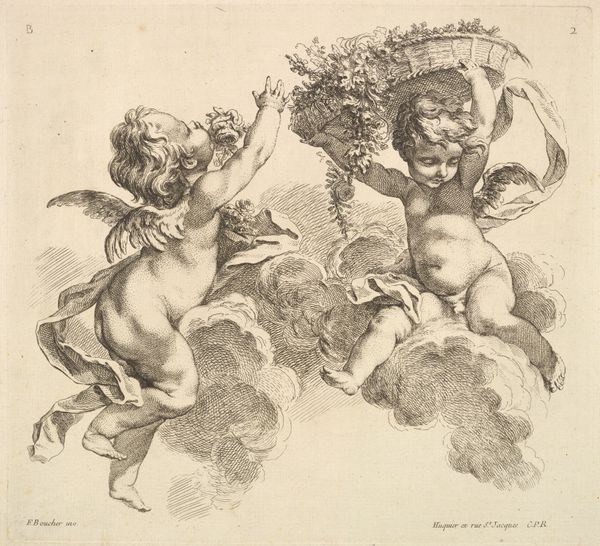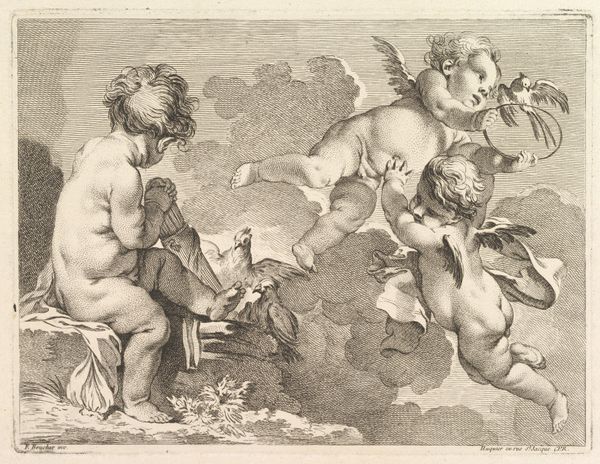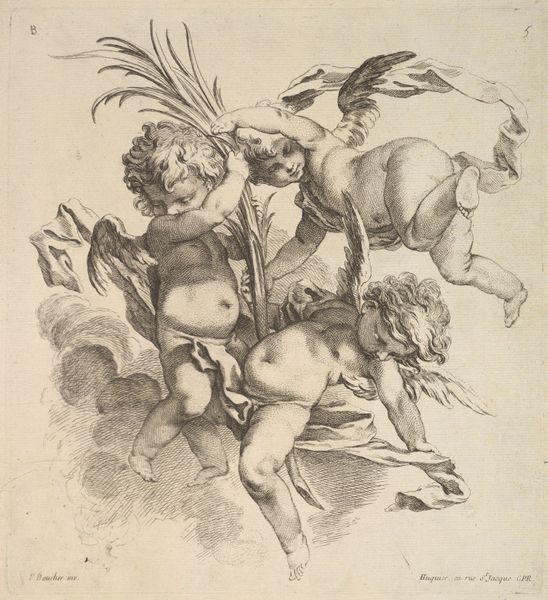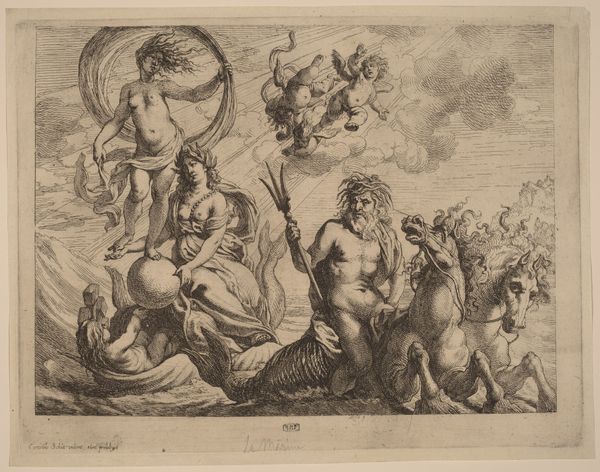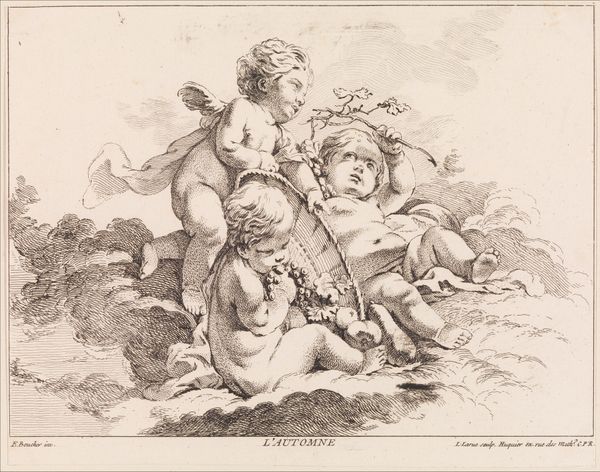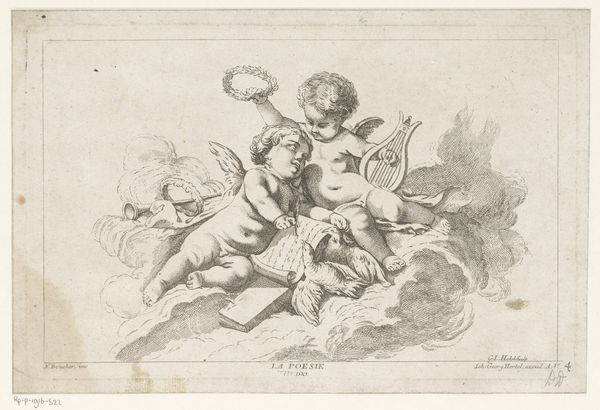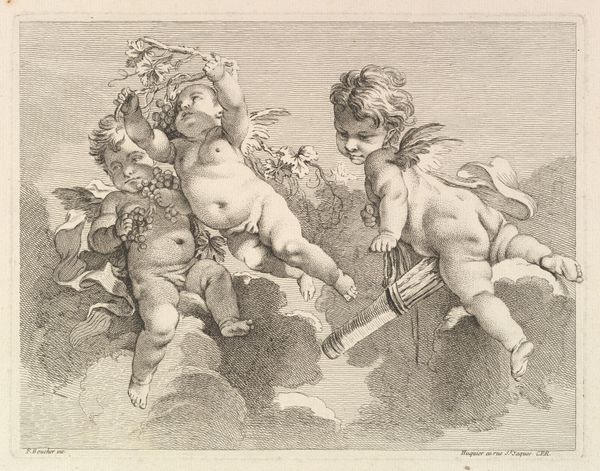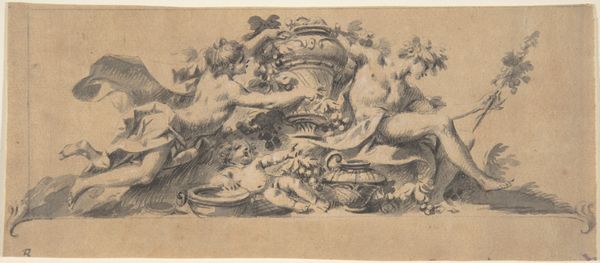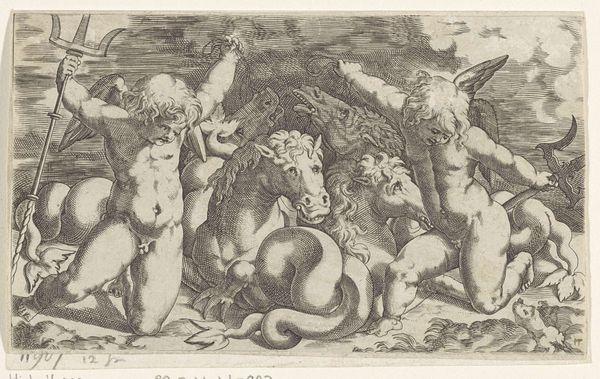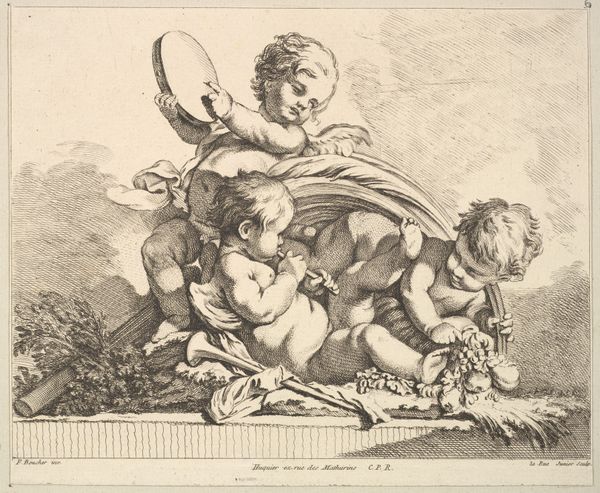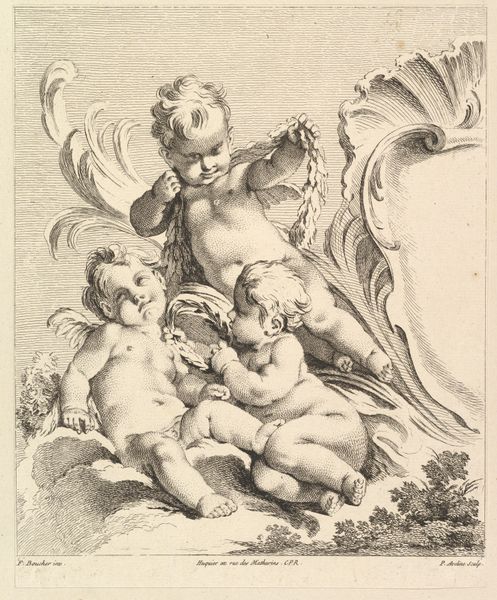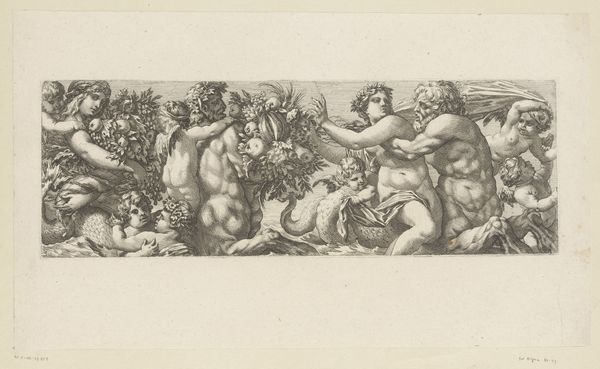
Trois Amours dont un tient une flèche (Three Loves, one of which holds an arrow), from Premiere Livre de Groupes d'Enfans (First Book of Groups of Children) 1702 - 1760
0:00
0:00
drawing, print, engraving
#
drawing
#
baroque
# print
#
figuration
#
engraving
Dimensions: sheet: 9 5/16 x 11 11/16 in. (23.6 x 29.7 cm) plate: 8 7/16 x 10 7/8 in. (21.4 x 27.7 cm)
Copyright: Public Domain
Curator: Before us is "Trois Amours dont un tient une flèche," which translates to "Three Loves, one of which holds an arrow," from the "Premiere Livre de Groupes d'Enfans." Pierre Alexandre Aveline produced this engraving sometime between 1702 and 1760. Editor: The overall effect is incredibly soft. The fine lines of the engraving lend the cherubic figures a sense of airy lightness, don't you think? Curator: It's intriguing how Aveline depicts love—or rather, these little agents of love. These putti figures, especially during the Baroque period, carry the weight of societal expectations around affection, duty, and perhaps even manipulation through romantic liaisons. How much freedom do they truly have? Editor: Free will is always up for grabs when there is beauty. What about the spatial arrangement? The artist balances a lone figure with a group, creating an engaging composition with visual texture but limited depth, especially compared with works of that time period. Curator: Yes, but looking closer at the societal and gendered dynamics: these representations become fraught, especially considering who produced and consumed them. The male gaze becomes undeniable, influencing the way we interpret these symbols of innocence and love today. Editor: Interesting idea. Though, couldn't the semiotic reading extend to the very forms? The clouds aren't just background. They are active participants that frame and mold these figures in the way that these cherubic ideals are produced and received through various socioeconomic lenses. Curator: That brings me back to considering Aveline himself within that socioeconomic context. What privileges and biases were embedded in his worldview and how did it allow him to reproduce images like this, images that reflect a highly curated vision of childhood, desire, and power dynamics. Editor: The dialogue between art and social awareness does lead us to profound contemplations! Even formal decisions, it becomes clear, resonate deeply with layers of meaning we are left to uncover through careful examination. Curator: Absolutely! Considering how artistic depictions shape perceptions can lead to important conversations about equality, representation, and liberation. Editor: And how artistic appreciation involves not just seeing, but also feeling, thinking, and questioning all aspects.
Comments
No comments
Be the first to comment and join the conversation on the ultimate creative platform.
